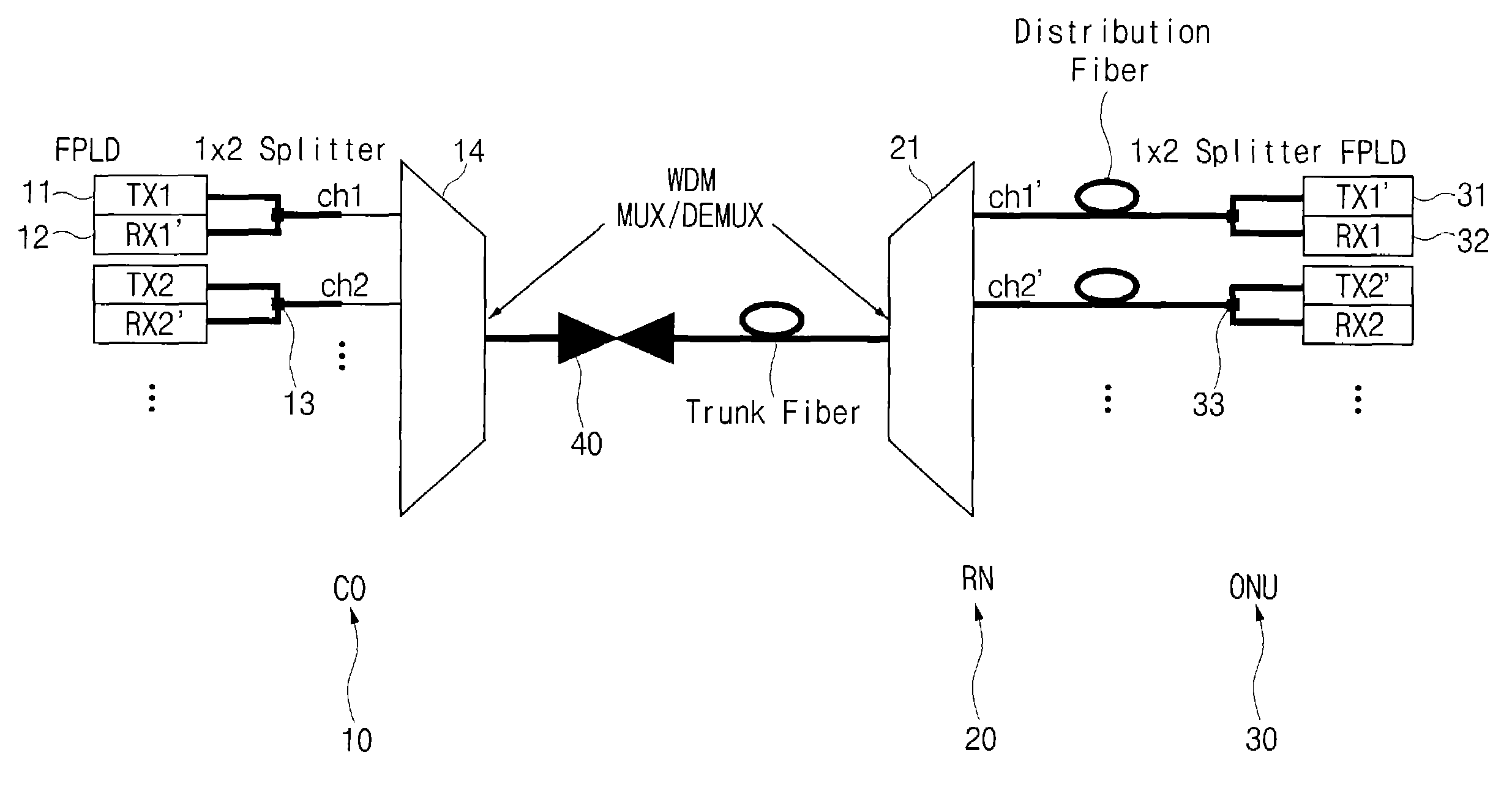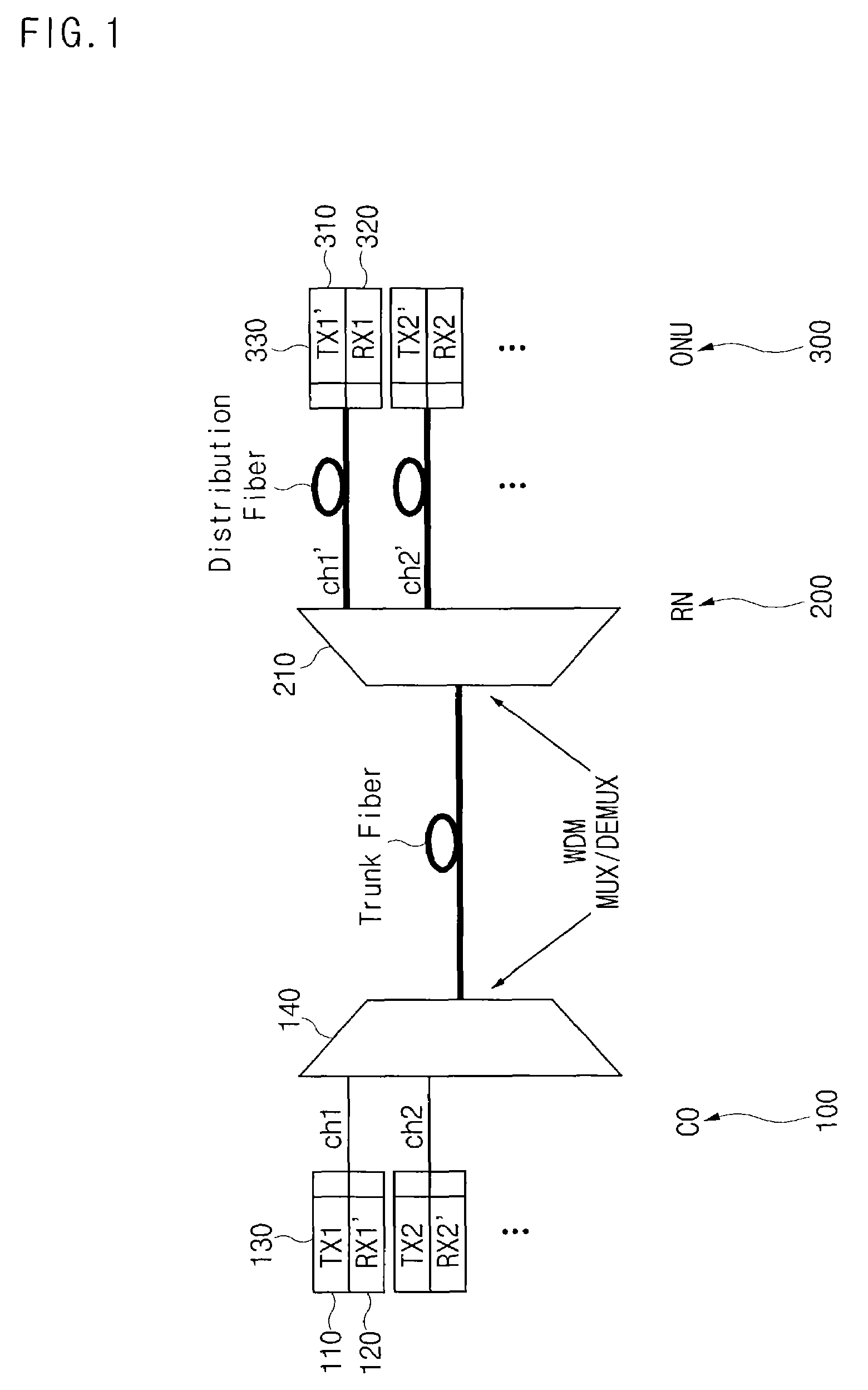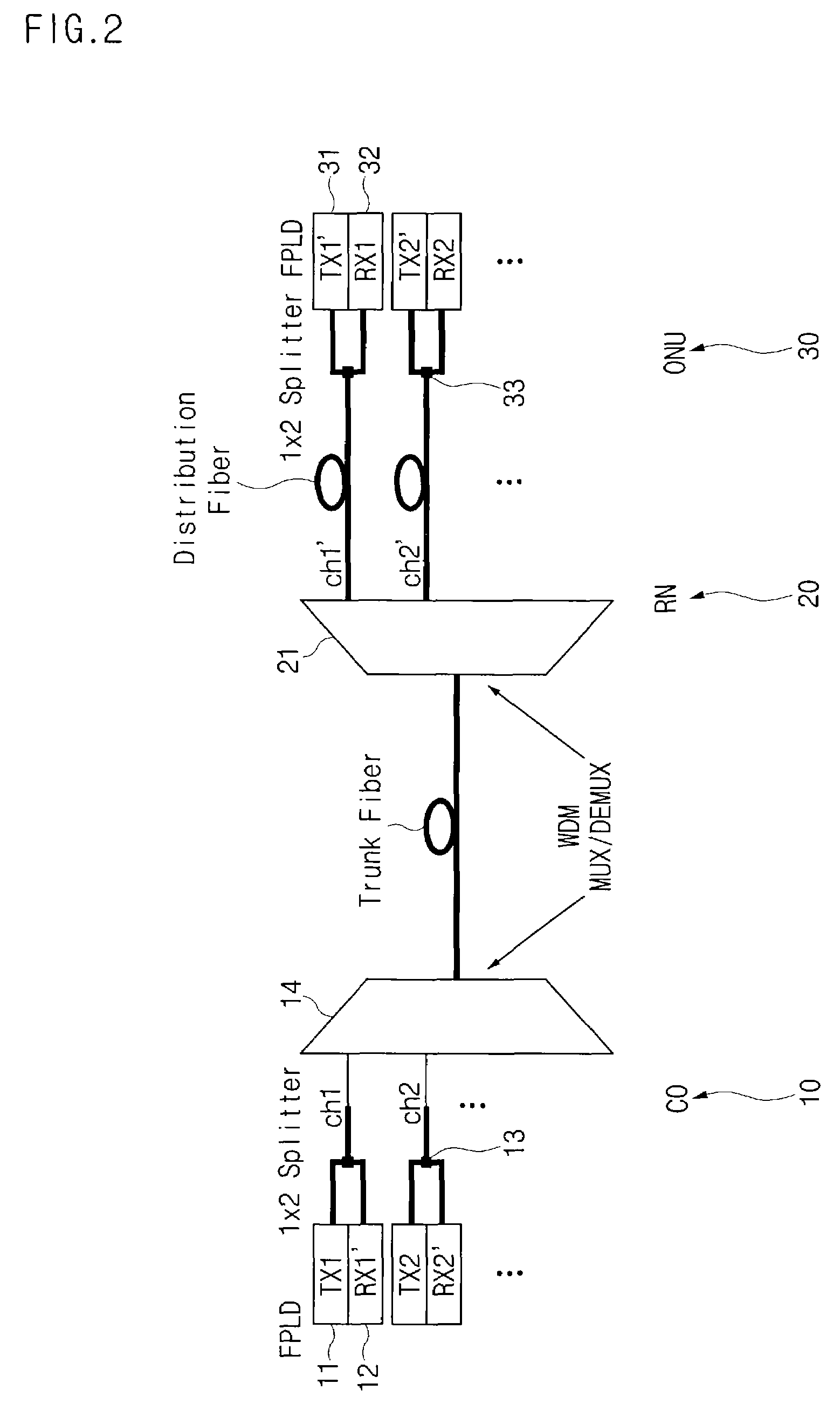Wavelength division multiplexing passive optical network system
- Summary
- Abstract
- Description
- Claims
- Application Information
AI Technical Summary
Benefits of technology
Problems solved by technology
Method used
Image
Examples
Embodiment Construction
[0041]Now, the configuration and operation of a WDM PON system according to the present invention will be described in detail with reference to the annexed drawings.
[0042]FIG. 2 is a schematic diagram illustrating the configuration of a WDM PON system according to an embodiment of the present invention. The illustrated system configuration is applicable to the case in which forward and backward signals have the same wavelength. As shown in FIG. 2, the system according to the embodiment of the present invention includes a central office (CO) 10, a remote node (RN) 20, and a plurality of optical network units (ONUs) 30. Each ONU 30 is connected to the central office 10 via optical links.
[0043]When the central office 10 receives optical signals of different particular wavelengths λ1, λ2, . . . λN, it multiplexes the received optical signals, and transmits the multiplexed optical signal to the remote node 20. The remote node 20 demultiplexes the multiplexed optical signal received from ...
PUM
 Login to View More
Login to View More Abstract
Description
Claims
Application Information
 Login to View More
Login to View More - R&D
- Intellectual Property
- Life Sciences
- Materials
- Tech Scout
- Unparalleled Data Quality
- Higher Quality Content
- 60% Fewer Hallucinations
Browse by: Latest US Patents, China's latest patents, Technical Efficacy Thesaurus, Application Domain, Technology Topic, Popular Technical Reports.
© 2025 PatSnap. All rights reserved.Legal|Privacy policy|Modern Slavery Act Transparency Statement|Sitemap|About US| Contact US: help@patsnap.com



